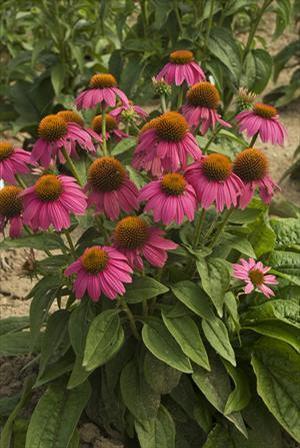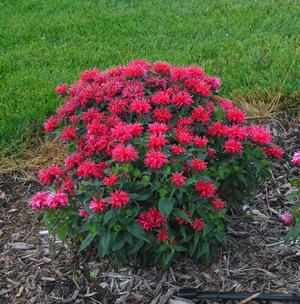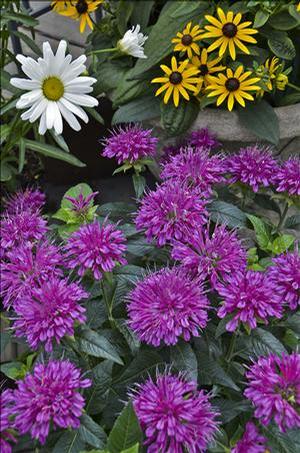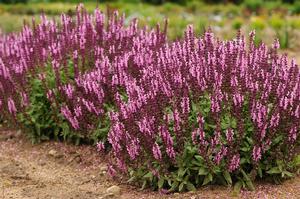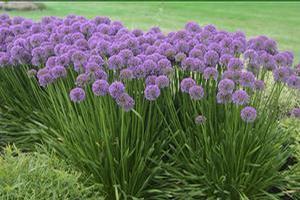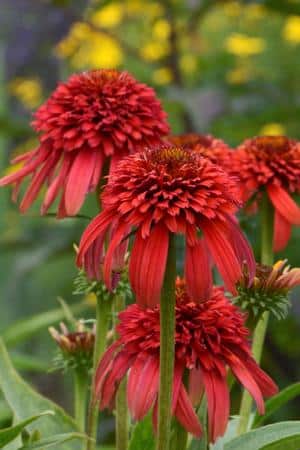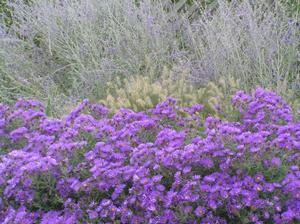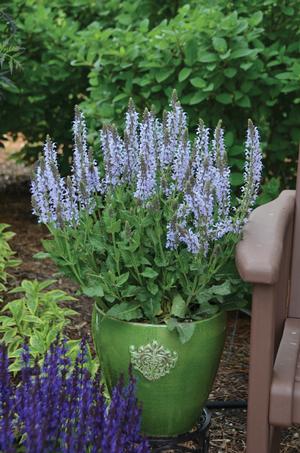 It is easy to have a low maintenance landscape while providing food and habitat for pollinators. There are many tough, low maintenance perennials that will reward the homeowner with colorful blooms and provide an environmentally friendly yard.
It is easy to have a low maintenance landscape while providing food and habitat for pollinators. There are many tough, low maintenance perennials that will reward the homeowner with colorful blooms and provide an environmentally friendly yard.
Alliums
Alliums are a magnet for bees and butterflies. The most noteworthy selection from this family is Allium “Millenium”. Thick, strappy green leaves provide a season long groundcover, with rosy-purple globe shaped flowers in summer. All alliums are deer and rabbit resistant. Allium “Millenium” forms nice clumps reaching 18 inches tall.
Asclepias tuberosa (Butterfly milkweed)
Butterfly milkweed is an important Missouri native. Migrating monarchs use this species as a food source for their caterpillars. The bright orange blooms also attract bees and other species of butterflies. It grows to 2 feet tall and blooms in the summer. Once established, it is extremely drought tolerant.
Echinacea (Coneflowers)
Thanks to selective breeding, there is a coneflower to fit with any landscape. Coneflowers have been developed in a wide range of colors and bloom styles.
- “PowWow White” is a compact selection that only grows 18 to 24 inches tall.
- For something brighter, “Solar Flare” has 6 inch, bright red blooms.
- For a daintier look, try the pom-pom flowering style of the Confections series. “Hot Papaya” is a tall, fragrant variety with red-orange blooms. “Butterfly Kisses” is a cute, compact selection with pink blooms.
Echinaceas bloom all summer long and only require a little dead-heading. Bees and butterflies love coneflowers.
Monarda (Bee Balm)
The brightly colored blooms of Bee Balm attract hummingbirds as well as bees. Until recently, most species of Monarda tended to be tall and leggy, making them unattractive choices for the landscape. Several new introductions provide low growing and compact varieties that work well in the front of borders.
- “Cherry Pops” has bright pink blooms and only grows to 20 inches tall.
- “Pardon My Pink” and “Pardon My Purple” maintain a tidy clump, growing only 12 inches tall.
Monardas are deer resistant.
Salvias
The Salvia family of plants are some of the toughest and easiest to grow. They maintain a low and compact growth habit that works well in the landscape bed. Bees, butterflies, and hummingbirds enjoy the colorful flower spikes that bloom from late spring through early fall. Salvias come in a range of colors, from the deep purple of “Caradonna”, to the light blue of “Crystal Blue”. For something livelier, try “Sensation Deep Rose Improved” with its bright pink blossoms on purple stems, or the pure white blooms of “Snow Hill”.
Sedums
Late blooming sedums provide a food source for pollinators in the fall. Sedums are drought tolerant and deer resistant. They come in a range of sizes, from:
- low growing ground cover types like “Dazzleberry”, with blueish foliage, and “Firecracker”, with maroon foliage.
- Taller selections include “Carl”, with bright green leaves and pink stems, as well as “Maestro”, with purple foliage.
Asters
Also a late season bloomer, asters can provide an explosion of color to the landscape, reaching 2 to 3 feet tall. Asters provide a late season food source to bees and migrating butterflies.
- “Kickin Chiffon” is a light pink selection that is compact and tidy.
- “Purple Dome” forms a well rounded mound of purple blooms.
- A more native selection would be the New England aster, which has light purple blooms.


